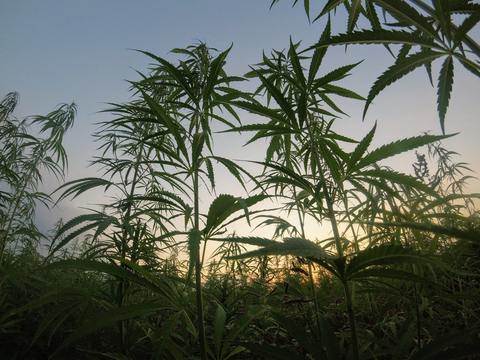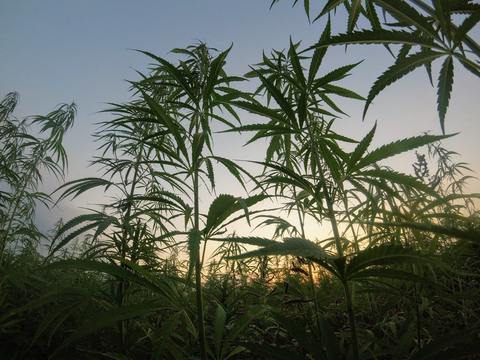Your cart is currently empty!


Hemp has been harvested for thousands of years as a food, fabric, fuel and medicine. Its rocky history reveals a multidimensional plant that has inspired controversy, confusion and fear, and is still misunderstood today. As hemp is coming under the spotlight again, we review the history of its cultivation and its different applications.
Some key moments in the history of hemp use
- 8000 BC: Evidence of hemp being one of the earliest crops to be cultivated is found in Asia. It spreads rapidly in Europe, Africa and South America, where seeds and oil were used for pottery and food mainly.
- 2000 – 800 BC: Hemp is considered a gift, referred to in Hindu religious documents as ‘sacred grass’, one of the five sacred plants of India.
- 600-200 BC: The use of hemp continues across northern Europe, with hemp rope found in southern Russia and Greece and hemp seeds and leaves found in Germany.
- 100 BC: China begins to use hemp to make paper.
- 1533: The King of England, King Henry VII, prioritizes hemp by fining farmers if they don’t grow it.
- 1606: North America discovers hemp as a key ingredient to make clothes, shoes, ropes, paper and food.
- 1700s: American farmers are required by law to grow hemp as a staple crop, with many of America’s founding fathers advocating for its benefits.
In Europe, commercial production takes off to produce rope and oakum to support the colonial and naval expansion.
- Early 1900s: In the United States, the word ‘marijuana’ replaces ‘cannabis’ as a way to associate the plant with the Mexican population.
The world’s production of hemp fiber increases, with Russia being the biggest producer.
- 1929: When the ban on alcohol is lifted in the United States, the first commissioner of the Federal Bureau of Narcotics, Harry Anslinger, tells the public that cannabis is ‘a devil drug’ that ‘turned men into wild beasts’, but his scientific advisors can’t find any valid evidence of cannabis being dangerous.
- 1937: The Marihuana Tax Act is passed in the United States, taxing anyone who deals with cannabis, without distinction between hemp and marijuana. The passing of the Act to destroy the hemp industry has been disputed to involve businessmen like Andrew Mello, Randolph Hearst and the DuPont Family. In Europe, the cultivation of hemp is not legally banned but commercial cultivation stops due to decreased demand compared to popular artificial fibers.
- 1942-1945: The tax on cultivation is lifted during WWII by the US government, who needs it to produce uniforms, canvas, ropes. The government releases a pro-hemp documentary called Hemp for Victory, encouraging farmers to grow hemp to support the war. The U.S. Department of Agriculture promotes hemp and publishes articles sharing its benefits, leading to over 400,000 ha of hemp planted throughout the Midwest and Southeast.
- 1950s: The Soviet Union is the world’s largest producer of hemp. Since 1931, the Hemp Breeding Department at the institute of Bast Crops in Ukraine has been one of the world’s largest centres for developing new varieties.
- 1960s: following the ratification of the UN Single Convention on Narcotic Drugs, cannabis – without distinction between hemp and marijuana – is banned in most countries. In the US, it is classified as a Schedule 1 drug, grouping the plant with heroin and LSD. This results in many countries doing the same, preventing research and production.
- 1971: In the UK, cultivation licenses are issued by the Home Office under the Misuse of Drugs Act, allowing hemp cultivation for non-drug purposes and referring to the plant as industrial hemp.
- 2007: The first hemp licenses in the US in over 50 years are granted to two farmers in North Dakota.
- 2014: President Obama signs the Farm Bill into law, allowing research institutions to start piloting hemp farming programs. The Farm Bill legally separates hemp from marijuana and legalizes the cultivation of industrial hemp for research purposes, defining industrial hemp as Cannabis Sativa L. plants with 0.3% concentration of THC or less (the psychotropic cannabinoid).
- 2018: The U.S. Food and Drug Administration approves Epidiolex, a cannabidiol oral medication.
The 2018 Farm Bill removes hemp and its derivatives from the Controlled Substances Act. In Europe today, hemp is a niche crop, cultivated on more than 33,000 ha. France is Europe’s biggest producer and second in the world, with 8,000 ha cultivated. It is mainly used for pulp for cigarette papers and technical applications.
The word leading producer is China, with 70% of the world output. 2.5 million ha of wild hemp still grow in the Russian far East.
Hemp uses
There are more than 50,000 different uses of hemp, that we can classify in 6 categories:
- Textiles: clothing, handbags, shoes etc.
- Industrial textiles : rope, canvas, tarps, carpeting etc.
- Paper: printing, newsprint, cardboard, packaging
- Food: hemp seed hearts, oil, protein powder, food supplements
- Building materials: oil paints, varnishes, fuel, solvent, coatings, insultation etc.
- Body care: soaps, shampoos, balms, cosmetics etc.
Hemp is a remarkable plant that can feed us, clothe us, house us, heal us, protect the environment. We are beginning to unlock its potential. At WholyMe, we believe its therapeutic and environmental benefits should be widely used.